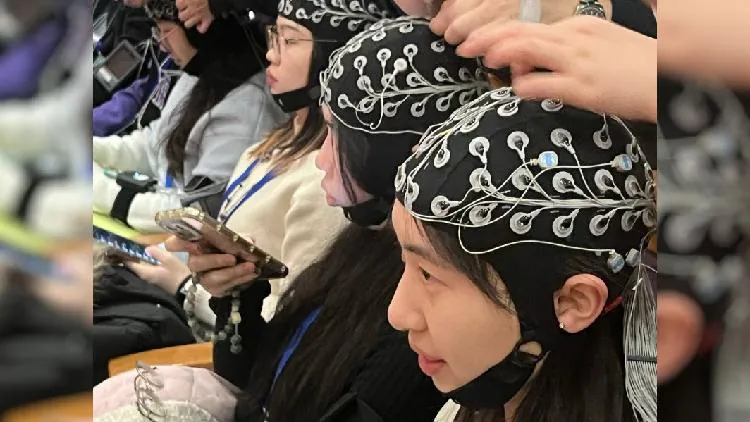
Revolutionary Brain-Computer Interface Unveils Secrets of Human Emotion in Live Art
2025-06-30
Author: Siti
In a sensational glimpse into the future of performance art and neuroscience, recent images of Tsinghua University students donning bizarre headgear adorned with silvery electrodes at a live theatrical event ignited a frenzy online. Users playfully speculated about a "secret high-tech cult" or an avant-garde art installation, but the reality is even more fascinating.
According to the university, these enigmatic "magic caps" are integral parts of an advanced portable brain-computer interface (BCI) system. This groundbreaking innovation captures the neural activity of students as they immerse themselves in live performances, aiming to decode their aesthetic experiences and unveil the brain's patterns during art appreciation.
Pioneering Research in Neuroscience and Art
Gao Xiaorong, a leading professor and director of Tsinghua's Neural Engineering Lab, stated that this initiative represents "China's first foray into non-invasive BCI technology for neuro-scientific studies in live performance settings." The findings from this experiment revealed startling insights—enhanced activity in the brain’s emotion and sensory processing regions during artistic engagement.
"Live performances evoke a more profound brain resonance linked to emotional immersion," emphasized Li Zexuan, a doctoral researcher involved in the project. With this neuroscientific evidence, researchers now understand why the emotional impact of live performances can be so much more powerful than that of recorded art.
The Rapid Rise of BCI Technology in China
BCI technology is advancing swiftly in China, with current applications spouting in areas such as medical diagnostics, safety monitoring in high-risk jobs, motor rehabilitation, and even treatments for conditions like Parkinson's disease and epilepsy. Essential to this study’s success is the unprecedented ability to gather laboratory-quality electroencephalography (EEG) data right in the midst of a live performance, through innovative synchronous multi-group data collection.
The EEG caps worn by the students are equipped with precise electrode interfaces that track brainwave signals, while small data recorders strapped to their arms capture emotion-related responses. This information is then wirelessly transmitted to a centralized data hub, where researchers dissect physiological reactions during artistic experiences.
Exploring the Connection Between Performance Art and Emotion
At the heart of this remarkable research lies a crucial question: how do performances and body language alter our emotions and neural states? Tsinghua University is actively collaborating with other universities and arts organizations to further explore the profound influence of art on mood.
As Gao stated, "Our goal is to uncover neural patterns in individuals experiencing emotional distress, such as those with anxiety, thereby providing scientific insights that could pave the way for innovative emotional therapies." This pioneering work not only bridges art and neuroscience but also opens doors to understanding and healing emotional challenges through the power of performance.


 Brasil (PT)
Brasil (PT)
 Canada (EN)
Canada (EN)
 Chile (ES)
Chile (ES)
 Česko (CS)
Česko (CS)
 대한민국 (KO)
대한민국 (KO)
 España (ES)
España (ES)
 France (FR)
France (FR)
 Hong Kong (EN)
Hong Kong (EN)
 Italia (IT)
Italia (IT)
 日本 (JA)
日本 (JA)
 Magyarország (HU)
Magyarország (HU)
 Norge (NO)
Norge (NO)
 Polska (PL)
Polska (PL)
 Schweiz (DE)
Schweiz (DE)
 Singapore (EN)
Singapore (EN)
 Sverige (SV)
Sverige (SV)
 Suomi (FI)
Suomi (FI)
 Türkiye (TR)
Türkiye (TR)
 الإمارات العربية المتحدة (AR)
الإمارات العربية المتحدة (AR)